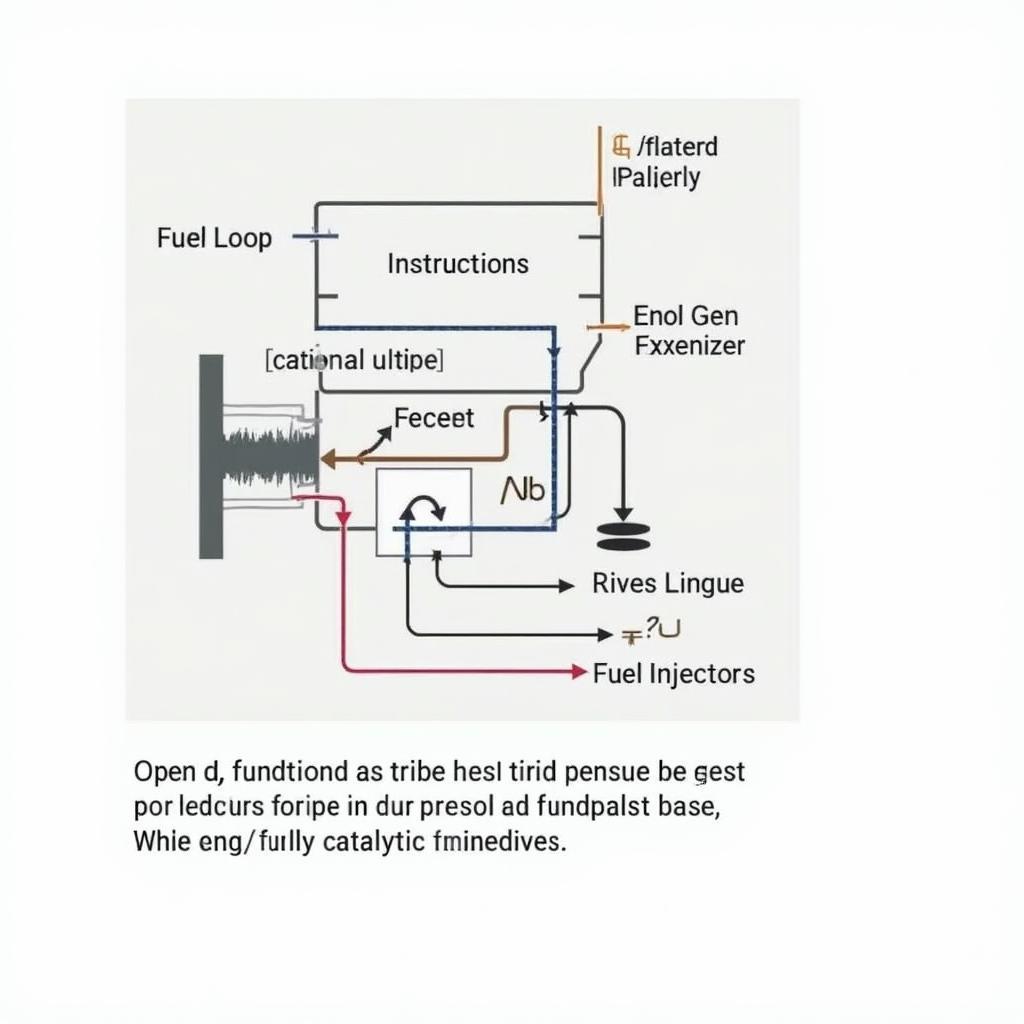Open loop vs closed loop OBD2: these two operating modes are crucial to how your vehicle’s engine management system functions. Understanding the difference between them can help you diagnose issues, improve performance, and even increase fuel efficiency. This article dives deep into the intricacies of these modes, providing a comprehensive guide for both car enthusiasts and professionals.
What is Open Loop Operation?
In open loop, the engine control unit (ECU) ignores feedback from the oxygen sensor (O2 sensor). It relies on pre-programmed fuel maps to determine the air-fuel mixture. Think of it like cooking with a recipe, but not tasting as you go. The ECU follows a set plan regardless of the actual conditions within the engine.
Open loop is typically used during:
- Cold starts: When the engine is cold, the catalytic converter is not yet efficient. Open loop allows for a richer mixture to aid in quick warm-up.
- Wide-open throttle (WOT): Under hard acceleration, the engine needs maximum power. A richer mixture provides this boost.
- System malfunctions: If the O2 sensor or other related components fail, the ECU defaults to open loop to protect the engine.
What is Closed Loop Operation?
Closed loop is the standard operating mode for a warmed-up engine. Here, the ECU uses the O2 sensor’s feedback to constantly adjust the air-fuel mixture. This dynamic adjustment creates the ideal balance for optimal performance, fuel efficiency, and emissions control. Think of it as a chef constantly tasting and adjusting the seasoning of a dish for the perfect flavor.
Closed loop ensures:
- Optimal air-fuel ratio: The constant feedback allows the ECU to fine-tune the mixture for the most efficient combustion.
- Reduced emissions: Precise control minimizes unburnt fuel, contributing to cleaner exhaust gases.
- Improved fuel economy: By maximizing combustion efficiency, closed loop helps you get more miles per gallon.
Open Loop vs Closed Loop OBD2: Key Differences
A simple way to understand the open loop vs closed loop obd2 difference is this: open loop is like driving a car with cruise control set at a fixed speed, while closed loop is like actively adjusting your speed based on traffic conditions.
| Feature | Open Loop | Closed Loop |
|---|---|---|
| O2 Sensor Feedback | Ignored | Utilized |
| Fuel Mixture | Pre-determined | Dynamically adjusted |
| Efficiency | Lower | Higher |
| Emissions | Higher | Lower |
| Operating Condition | Cold start, WOT, malfunctions | Normal operating temperature |



How to Diagnose Open and Closed Loop Problems with an OBD2 Scanner
An obd2 to pc connection combined with the best free obd2 software windwos can help you pinpoint open and closed loop issues. You can monitor parameters like O2 sensor readings, fuel trims, and engine coolant temperature to identify problems such as a faulty O2 sensor, vacuum leaks, or fuel pressure issues. If you’re looking for the best live data obd2 scanner, checking its compatibility with various software for scan usb obd2 cable is essential. For users of AutoEnginuity, finding compatible obd2 cables that work with autoenguity is crucial for accurate diagnostics.
Conclusion
Understanding the difference between open loop vs closed loop OBD2 is essential for any car owner. Knowing how these modes operate empowers you to troubleshoot effectively, maintain your vehicle’s performance, and optimize fuel efficiency. By leveraging the power of an OBD2 scanner, you gain deeper insights into your engine’s operation, allowing for proactive maintenance and informed decision-making.
FAQs
- What happens if my car stays in open loop? Poor fuel economy, increased emissions, and potential damage to the catalytic converter are common consequences.
- Can I force my car into closed loop? No, the ECU automatically switches based on specific parameters. Fixing the underlying issue causing open loop operation is the solution.
- How long does it take for a car to go into closed loop? This varies but usually takes a few minutes after starting, once the engine reaches operating temperature and the O2 sensor is heated.
- Does open loop damage my engine? Extended periods in open loop can contribute to engine wear, but short durations during cold starts and WOT are normal.
- Why is my car stuck in open loop after warming up? This could be due to a faulty O2 sensor, a vacuum leak, a malfunctioning coolant temperature sensor, or other issues.
- What are some common OBD2 codes related to open loop operation? Codes like P0130 (O2 Sensor Circuit Malfunction) and P0171 (System Too Lean) can indicate open loop problems.
- Can driving habits affect open/closed loop operation? Aggressive driving with frequent WOT periods can lead to more time spent in open loop, although it’s designed for these scenarios.
If you need further assistance, please contact us via WhatsApp: +1(641)206-8880, Email: [email protected], or visit us at 789 Elm Street, San Francisco, CA 94102, USA. Our customer service team is available 24/7.

